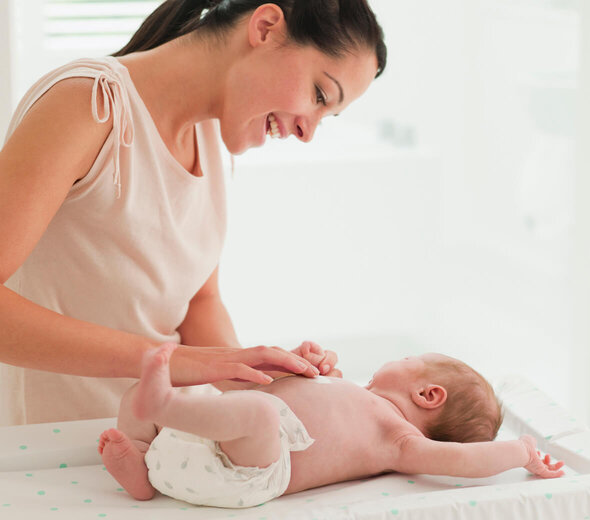

I am a happy mum of a boy and a girl. It might seem that activities such as changing and washing are in both cases the same, but each of my children needed a different treatment. First my daughter was born, and then the son appeared. Before birth I thought that taking care of the girl's genital hygiene is much easier. Nothing could be further from the truth. Although in boys cleaning seems to be more troublesome, in girls it must follow certain patterns so as not to result in any infection.
In the first weeks of life girl organs are often swollen and red. Sometimes there is a mucous transparent discharge that may be white or slightly red with blood. This is a normal situation caused by hormones.
One of the most important principles of girl hygiene is to clean the perineum area from front to back, never the other way round! This way you will avoid transferring bacteria from an anus to a perineum while changing or bathing. Improper cleaning can cause burning or redness. It can also be the cause of serious infections, so you must very gently, but precisely and accurately clean every nook and cranny. It is particularly important while changing after a poo.
First wash the belly, buttocks, crotch and - as with bigger poo sometimes - even thighs. In this case, if there is a possibility I recommend washing the baby under running water. It may be a bit troublesome but cleaning with wipes can not be compared to washing with water and soap.
It happens quite often and that the feces gets in between the labia. Although it is not recommended to clean these places, in this case you have to do it. Remember, try to be gentle, so as not to irritate delicate baby skin. I must admit that I was afraid to use regular wipes for that purpose so, if I could, I used cotton swabs and warm water, of course without washing fluids or soap. Firstly, I gently parted the skin folds and wiped them firmly but carefully with a damp cotton swab. I tried to wipe from inside towards outside so as the poo did not get any further. Then I was sure that I removed everything with the swab.
After each bath and changing I applied a thin layer of nappy rash cream on clean and, above all, dry skin. I am writing a thin layer, as I unfortunately repeatedly saw mothers applying a thick layer of the cream that partially got between the labia. My pediatrician exceptionally sensitized me to this, warning that this cream can be irritating and even cause infections after being used for a while.
From my own experience I would not recommend using talcum powder in girls, because every time the powder got in between the labia, up to the urethra. Once it concentrated into a mass and plugged my daughter's urethral opening and she had a problem with urinating.
Taking care of a boy is much less laborious. When washing or changing diapers, you should thoroughly clean the area of lower abdomen, buttocks, crotch, penis, not forgetting the under scrotum region. Remember not to put off the foreskin skin, because it can not be separated from the penis for the first few months or even years. If you try to do it by force, you will hurt the baby, and can even cause irritation, which may result in infection. In boys, the direction of washing their genitals does not really matter.
Apply a thin layer of nappy rash cream on a clean and dry skin. Remember to thoroughly dry the skin under the scrotum. A few times I did this inaccurately and unfortunately my son's skin became chafed.
If your son is circumcised obey the same rules as above. You should only pay attention, especially right after the procedure of foreskin removal, if the wound heals properly. Redness and yellowish discharge are normal symptoms, but longer persistence of swelling, severe redness or appearance of yellowish blisters are the signs calling for an immediate consultation with a doctor.
Moreover, you should observe whether your son urinates properly. If the flow is interrupted, or there are just drops, the opening might not be sufficiently exposed, or your child has an infection. In any case, I recommend not waiting and presenting the problem to your pediatrician.